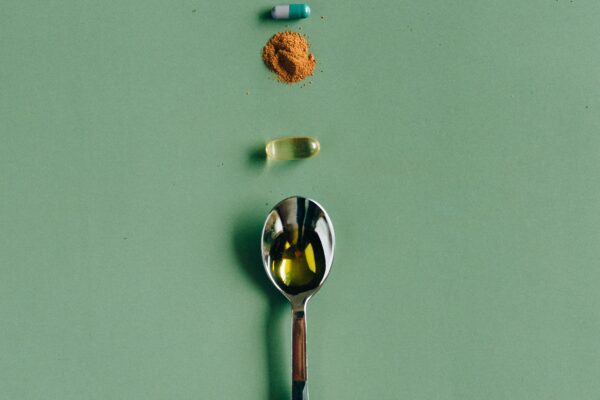By Staci Gulbin, MS, MEd, RD
Staci Gulbin is a registered dietitian with BumpVitamins.com. Staci is also a freelance writer, health editor, the founder of LighttrackNutrition.com, and the author of The High-Protein Bariatric Cookbook.
Staci has graduate degrees in Biology, Human Nutrition, and Nutrition Education from New York University and Columbia University, respectively. She has treated thousands of patients across many wellness areas such as weight management, fitness, long-term care, rehab, and bariatric nutrition.
Neural Tube Defects (NTDs)
Spinal birth defects, also known as neural tube defects (NTDs), are severe birth defects of the brain and spine that impact thousands of babies every year in the United States (1,2). These spinal birth defects occur when the neural tube, which forms the brain and spine in unborn babies, doesn’t close. In turn, this causes conditions such as spina bifida (a spinal cord defect) or anencephaly (a brain defect) (1).
Brain defects are more than likely to be lethal at or before birth. However, spina bifida is survivable, but can greatly impact the mobility and quality of life of the baby (3). Fortunately, you can prevent such defects by taking folic acid and DHA supplements. Taking just 400 micrograms of folic acid daily before conception and during early pregnancy can prevent up to 70% of NTDs that occur in the U.S. every year (2). Read below to learn more about NTDs and how folic acid and DHA can prevent them.
Fast facts about NTDs
The neural tube is a precursor to the nervous system, of which the top becomes the brain and the bottom becomes the spine. NTDs occur when the neural tube doesn’t close all the way (1,4). In turn, defects of the spine or brain can form that can impact the length and/or quality of life of the baby. The most common issue to arise from NTDs is spina bifida.
Spina bifida is a birth defect that occurs when there is a hole in the spinal column. This leads to paralysis of the nerves below the affected area of the spinal cord, resulting in an impaired ability to walk, as well as bowel and urinary dysfunction (4). Although some babies with spina bifida will have learning disabilities, they usually have normal intelligence. Spina bifida can either be mild, like spina bifida occulta or severe like myelomeningocele, which is the most common form of the disease.
Less common spinal birth defects include brain defects like anencephaly, in which all or most of the brain is missing (4,5). This type of brain defect often results in stillborn babies or death soon after birth. Another rare NTD, called encephalocele, occurs when there is an opening in the skull. Children can survive this brain defect, but it can cause paralysis, vision problems, learning disabilities, seizures, or movement issues (4).
What is folic acid?
Folic acid is the fully oxidized form of folate that is found in fortified foods and dietary supplements (6). Folate itself is a water-soluble vitamin, sometimes called vitamin B9, found in foods like:
• beef liver
• dark, leafy green vegetables like asparagus, Brussels sprouts, and spinach
• fortified cereals
• black-eyed peas
Experts recommend that most adults consume between 400 and 600 micrograms of folate daily (2,6). Preventing folate deficiency can reduce the likelihood of health conditions like anemia, digestive problems, and NTDs (6).
What is DHA?
DHA, or docosahexaenoic acid, is a type of omega-3 fatty acid present in fish, fish oils, and krill oils (7). This type of fatty acid plays a role in cell membranes in the retina of the eye as well as the brain and sperm.
DHA also provides energy for the body and helps to form compounds called eicosanoids that function in systems of the heart, lungs, endocrine organs, and immunity of the body (7). Experts also suggest that, besides preventing NTDs, DHA also promotes proper brain and eye development (8).
How can folic acid and DHA help prevent NTDs?
Folic acid and DHA can help prevent NTDs due to their role in brain health. Folic acid helps make new cells and proves itself time and time again to prevent neural tube defects in babies (1,2). Meanwhile, DHA is well known for its role in brain health in both unborn babies and adults (8).
How much folic acid and DHA should I take each day?
You should be taking folic acid and DHA not only during the first weeks of pregnancy but also before conception since about half of all pregnancies in the United States are unplanned (2). And with most NTDs occurring in the first month after conception, it’s vital for women of childbearing age to take a daily multivitamin with sufficient folic acid and DHA, to prevent NTDs in case they become pregnant.
It’s recommended that you take at least 400 micrograms of folic acid every day, even if you’re not planning to conceive. If you are pregnant, the daily dosage increases to 600 micrograms (1,2). If you have had an NTD-affected pregnancy before and are planning to conceive, the Centers for Disease Control recommends 4000 micrograms daily of folic acid daily in the month before pregnancy, continuing through the first trimester (1).
When it comes to DHA, experts suggest 200 milligrams of DHA each day to help your baby’s brain and eyes develop properly (8).
How can I ensure enough folic acid and DHA each day?
You can consume these nutrients in supplements known as prenatal vitamins as well as fertility vitamins. These types of vitamins typically contain all the nutrients you need to prepare your body for pregnancy in the optimal doses for you and your unborn baby. The most common vitamins found in prenatal and fertility supplements include (9):
• Folic acid
• Calcium
• Iron
• Vitamins A, C, D, and E
• Zinc
• Copper
• Iodine
Check the label of the vitamin product you choose to make sure it contains 100-percent of the daily recommended value of such nutrients. Also, it’s important to look for products with National Sanitation Foundation (NSF) certification to ensure proper safety practices are used in manufacturing (10). It is also important to verify that the products are third-party tested to ensure you are receiving a product that meets purity and potency standards.
What else can I do to prevent spinal birth defects?
Consume a healthy diet.
Along with dietary supplements, everyday nutrition is vital for the healthiest pregnancy possible. Be sure to consume a diet full of antioxidant-rich fruits and vegetables, as well as whole grains and lean proteins. Whole grain products contain nutrients such as B vitamins, magnesium, zinc, iron, as well as protein and fiber (11).
Also, nutrients like iron, vitamin D, calcium, and iodine are important for the proper growth and development of the baby during pregnancy (2). Iron can come from food sources like beans, animal products like beef, poultry, and seafood, as well as from leafy green vegetables like spinach and kale (12).
Deficiencies in vitamin C and B12 have also been linked to NTDs (13). Therefore, consume vitamin C by eating citrus fruits (e.g. oranges and lemons) daily, as well as vegetables like tomatoes and bell peppers. You should also check to see if your multivitamin contains vitamin C. Women should consume about 75 milligrams of vitamin C daily for optimal health. When pregnant, vitamin C intake should increase to 85 mg and to 120 mg for lactating women (14).
Vitamin B12 is found in its optimal form in animal products like meats, poultry, seafood, as well as eggs and dairy products. Most adults should consume 2400 milligrams of vitamin B12 daily (15). If you follow a meatless diet, be sure to consume vitamin B12 in supplement form since plant-based forms of B12 like algae are not as bioavailable as animal sources of the vitamin (16). For pregnant women, you should consume 2600 milligrams daily, while lactating women should consume 2800 milligrams daily (15).
Follow a healthy lifestyle.
Besides watching your diet, you should also abstain from smoking, drinking alcohol, and illegal drugs to help reduce the risk of spinal birth defects. These practices should be part of a healthy lifestyle for anyone, not just those who are expecting to conceive. Also, keep up with regular doctor’s visits and vaccines, and maintain a healthy weight for optimal health for you and your baby (2).
References:
1. Centers for Disease Control and Prevention (last reviewed December 5, 2019) “Neural Tube Defects.”
2. March of Dimes (September 2017) “Prenatal Health & Nutrition.”
3. Imbard A, Benoist JF, Blom HJ. Neural tube defects, folic acid and methylation. Int J Environ Res Public Health. 2013 Sep 17;10(9):4352-89. doi: 10.3390/ijerph10094352. PMID: 24048206; PMCID: PMC3799525.
4. National Institutes of Health Eunice Kennedy Shriver National Institute of Child Health and Human Development (last reviewed 08/17/2018) “About Neural Tube Defects (NTDs).”
5. March of Dimes (last reviewed February 2018) “Neural Tube Defects.”
6. National Institutes of Health Office of Dietary Supplements (last updated July 19, 2019) “Folate.”
7. National Institutes of Health Office of Dietary Supplements (last updated October 17, 2019) “Omega-3 Fatty Acids.”
8. March of Dimes (last reviewed February 2018) “Vitamins and Other Nutrients During Pregnancy.”
9. Mayo Clinic (April 13, 2018) “Prenatal vitamins: Why they matter, how to choose.”
10. NSF- The Public Health and Safety Organization (accessed March 7, 2020) “Supplement and Vitamin Certification.”
11. Oldways Whole Grain Council (accessed March 7, 2020) “Whole Grains: An Important Source of Essential Nutrients.”
12. National Institutes of Health Office of Dietary Supplements (last updated February 28, 2020) “Iron.”
13. Greene, N.D. and Copp, A.J. (2014) “Neural tube defects.” Annu Rev Neurosci., 37:221-42.
14. National Institutes of Health Office of Dietary Supplements (last updated February 27, 2020) “Vitamin C.”
15. National Institutes of Health Office of Dietary Supplements (last updated February 19, 2020) “Vitamin B12.”
16. Dagnelie, P.C., van Staveren, W.A., and van der Berg, H. (April 1991) “Vitamin B-12 from algae appears not to be bioavailable.” American Journal of Clinical Nutrition, 53(3): 695-697.
These statements have not been evaluated by the Food and Drug Administration. This product is not intended to diagnose, treat, cure or prevent any disease.
Tell your doctor, pharmacist, and other healthcare providers about any dietary supplements and medicines you take. They can tell you if those dietary supplements might interact or interfere with your prescription or over-the-counter medicines or if the medicines might interfere with how your body absorbs, uses, or breaks down nutrients.




